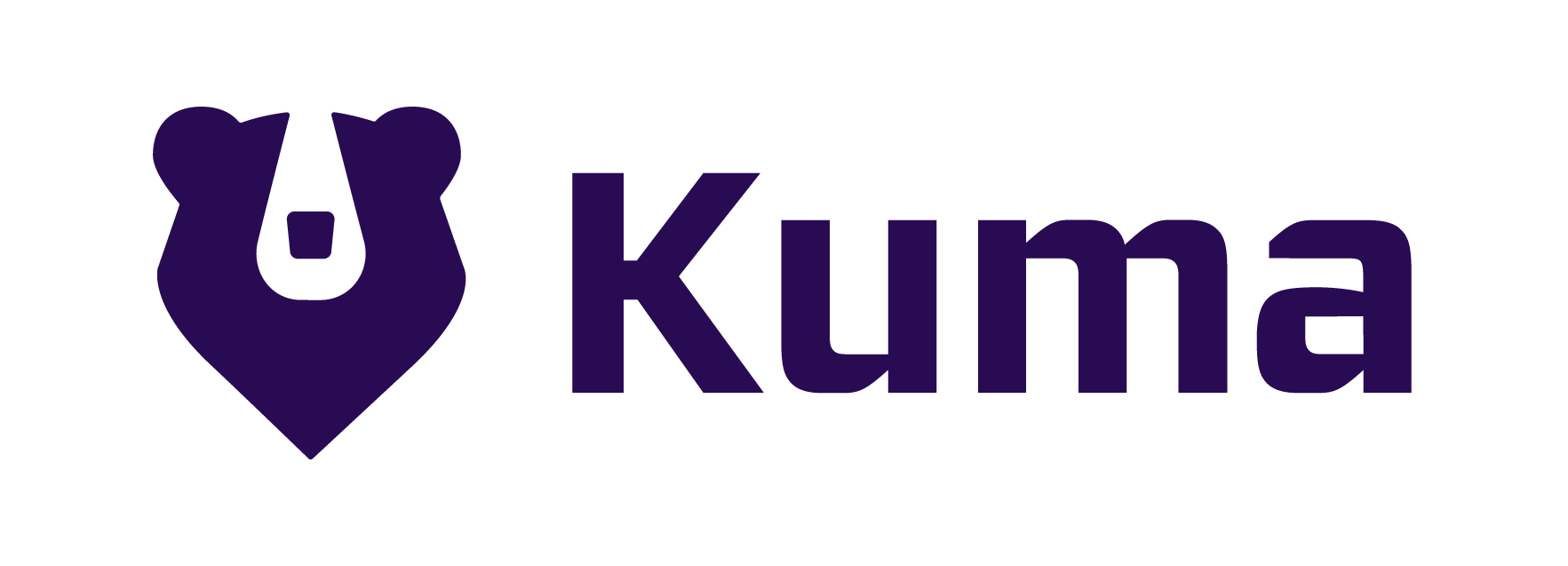Welcome to a sample application that demonstrates the Kuma service mesh in action. Kuma is designed to work across Kubernetes and VMs environments, with support for multi-zone deployments across many different clusters, data centers, and clouds.
To learn more about Kuma, see the Kuma website.
Kuma is a CNCF Sandbox project.
The application consists of the same app instantiated differently to simulate 2 services:
- A
demo-appservice that presents a web application that allows us to increment a numeric counter - A
kvservice which simulates a database.
flowchart LR
browser
subgraph kuma-mesh
edge-gateway
demo-app(demo-app :5050)
kv(kv :5050)
end
edge-gateway --> demo-app
demo-app --> kv
browser --> edge-gateway
The demo-app service presents a browser interface that listens on port 5050.
You can set the zone key on the kv curl -v -XPOST -d '{"value":"zone-1"}' localhost:5050/api/key-value/zone -H 'content-type: application/json' where localhost:5050 is your kv service.
Follow the getting-started on the Kuma docs.
Or you can play with skaffold on your already running k8s cluster:
make skaffold/devThis will demo an entire stack on top of Kuma.
You can also just pick which demo you want with:
make demo/listWhich will return something like:
$ make demo/list
# Run the demo application without Kuma
kubectl apply -k kustomize/base
# Run the demo application with Kuma
kubectl apply -k kustomize/overlays/000-with-kuma
# Run the demo application with Kuma, mTLS and Mesh Traffic Permission
kubectl apply -k kustomize/overlays/001-with-mtls
# Run the demo application with Kuma, mTLS, Mesh Traffic Permission and a Gateway
kubectl apply -k kustomize/overlays/002-with-gatewayTo apply these manifests directly, you should have a running k8s cluster and Kuma already installed.
helm install kuma kuma/kuma --create-namespace --namespace kuma-systemYou can cleanup a demo by doing: kubectl delete -k k8s/overlays/002-with-gateway
We can configure the following environment variables when running demo-app:
KV_URL: The address at which to contact the service.APP_VERSION: Lets you change the version number displayed in the main page ofdemo-appand the headerx-demo-app-versionto all responses.
The APP_VERSION environment variables are handy when we want to create different versions of demo-app and get immediate visual feedback when routing across them.
To debug things we strongly recommend using: netshoot:
kubectl debug demo-app-68784dc9d7-rjxgx -n kuma-demo -it --image=nicolaka/netshootTo add delay to response you need to set header x-set-response-delay-ms. Example:
curl localhost:5050/api/counter -XPOST -H "x-set-response-delay-ms: 5000"To enforce response status code you need to set header x-set-response-status-code. Example:
curl localhost:5050/api/counter -XPOST -H "x-set-response-status-code: 503"To simulate random failures you need to set header x-failure-percentage with a value between 0 and 100. A value of 0 (or missing header) means no failures, while 100 means always fail. Example:
# 50% chance of failure
curl localhost:5050/api/counter -XPOST -H "x-failure-percentage: 50"
# Always fail
curl localhost:5050/api/version -H "x-failure-percentage: 100"
# No failures (same as not setting the header)
curl localhost:5050/api/version -H "x-failure-percentage: 0"



